Cabinet War Rooms
Churchill Museum
Useful Information
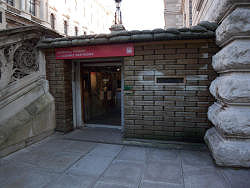
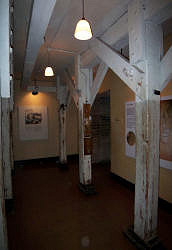
| Location: |
Whitehall, at the end of King Charles Street at St. James’s Park. Nearest underground: Westminster or St James’s Park. |
| Open: |
All year daily 9:30-18, last admission 17. Closed 24-DEC, 25-DEC, 26-DEC. [2021] |
| Fee: |
Adults GBP 25, Children (5-15) GBP 12.50, Children (0-4) free, Seniors (65+) GBP 22.50, Students GBP 22.50, Disabled GBP 22.50, Carer free. [2021] |
| Classification: |
 World War II Bunkers World War II Bunkers
|
| Light: |
 Incandescent Incandescent
|
| Dimension: | |
| Guided tours: |
D=45 min.
Audioguide








|
| Photography: | |
| Accessibility: | |
| Bibliography: | |
| Address: |
Cabinet War Rooms, Clive Steps, King Charles Street, London SW1, Tel: +44-20-7930-6961.
E-mail: |
| As far as we know this information was accurate when it was published (see years in brackets), but may have changed since then. Please check rates and details directly with the companies in question if you need more recent info. |
|
History
| 1938 | construction work began. |
| 27-AUG-1939 | War Rooms became fully operational. |
| 16-AUG-1945 | War Rooms abandoned with the end of the war. |
| 1948 | an announcement in the Parliament ensured their preservation as an historic site. Restricted access. |
| 1981 | the Prime Minister, Margaret Thatcher, decided that the site should be made more easily accessible that its history became more widely known. |
| 1981-1984 | preservation and restoration by the Imperial War Museum and the Department of the Environment. |
| 11-FEB-2005 | Churchill Museum opened at the Cabinet War Rooms site. |
Description
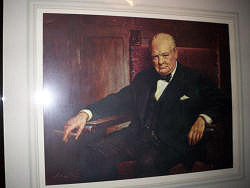
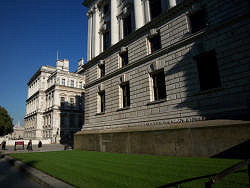
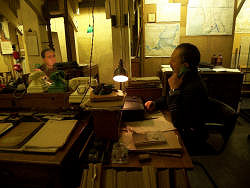
Right in the middle of London, between Parliament Square and Trafalgar square is the location of a most important historic subterranea. At the end of King Charles Street some steps lead down to the Cabinet War Rooms. A bunker with 19 rooms, only a few meters below surface was the most important center of British defense during World War II. Churchill’s underground wartime headquarters was the place where the British War Cabinett and the chiefs of staff directed the British war machinery.
The bunker is restored to the state it had 1945, and shows numerous interesting details from this time. There is for example the telephone, Churchill used to talk to President Roosevelt. The Conference Room, Map Room and Churchill’s bedroom are well preserved.
The bunker was originally a normal cellar. As the ground falls towards St. James’ Park, the cellar is half above ground at this side, and the stairs from the door in the center of the facade goes right through the cellar at this point. When the cellar was transformed into a bunker, the ceilings were enforced by concrete and supported by wooden beams. The above ground wall was also covered with concrete from the outside and the inside, and the weakest point below the stair was filled completely with concrete.
The bunker was equipped with all kind of communication technology. There were telephones, direct lines to the other allies, scrambled phones, map rooms for strategic planning and much more. Many people lived in the bunker, although Churchill himself preferred to live in his flat above. When the bombs or German V2 rockets were falling on London, he often observed it from the roof of the building instead of hiding inside the bunker. However, the building was never hit and the bunker never really needed.
A few years ago the Churchill Museum was built in a section of the huge cellar. It is now part of the Cabinet War Rooms. It is more or less a huge hall, which is full with memorabilia and dozens of interactive multimedia gadgets. Although generally of more interest to the younge generation, a few of them are such an impressive source of information, it is possible to spend all day in the museum. Some items of Churchill are on display, like the pistol he owned during the second Anglo-Boer war in 1899, which he attended the as a war correspondent. Of course there are some of his pictures, he was a prolific painter. And obviously there is one of the cigars he was famous for. He started smoking in 1895 when he travelled to Cuba to observe the Spanish battles against Cuban guerrillas. He smoked eight of them daily, but he had to relight them frequently, as they went out all the time.

|
| Cabinet War Rooms Gallery |
 Search DuckDuckGo for "Cabinet War Rooms"
Search DuckDuckGo for "Cabinet War Rooms" Google Earth Placemark
Google Earth Placemark Winston Churchill - Wikipedia
Winston Churchill - Wikipedia Churchill War Rooms, official website (visited: 09-JUL-2021)
Churchill War Rooms, official website (visited: 09-JUL-2021) Index
Index Topics
Topics Hierarchical
Hierarchical Countries
Countries Maps
Maps